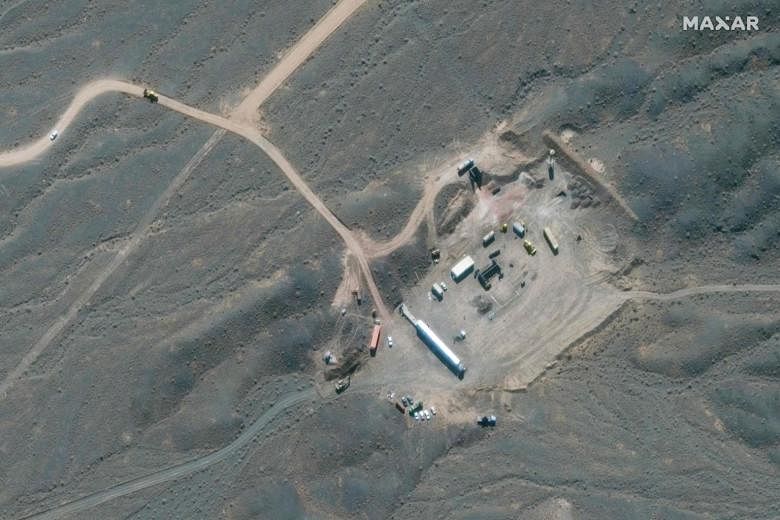TEHERAN (AFP) - Iran announced Saturday (April 10) it has started up advanced uranium enrichment centrifuges in a breach of its undertakings under a troubled 2015 nuclear deal, days after the start of talks on rescuing the accord.
The United States had said Friday that it had offered "very serious" ideas on reviving the accord but was waiting for Teheran to reciprocate, something Saturday's move signally failed to do.
President Hassan Rouhani inaugurated a cascade of 164 IR-6 centrifuges for producing enriched uranium, as well as two test cascades - of 30 IR-5 and 30 IR-6S devices respectively - at Iran's Natanz uranium enrichment plant, in a ceremony broadcast by state television.
The television aired no images of the injection of uranium hexafluoride gas into the cascades, but broadcast a link with engineers at the plant who said they had started the process and showed rows of centrifuges.
Mr Rouhani also launched tests on the "mechanical stability" of its latest-generation IR-9 centrifuges.
Under the nuclear deal, Iran is currently only allowed to use "first-generation" IR-1 centrifuges for production, and to test a limited number of IR-4 and IR-5 devices.
Iran's latest move to step up uranium enrichment follows an opening round of talks in Vienna Tuesday with representatives of the remaining parties to the deal on bringing the United States back into it.
Then-president Donald Trump withdrew from the agreement in 2018 but his successor Joe Biden has said he is ready to return, arguing the deal had been successful in dramatically scaling back Iran's nuclear activities.
The Vienna talks are focused not only on lifting crippling economic sanctions Mr Trump reimposed, but also on bringing Iran back into compliance after it responded by suspending several of its own commitments.
All sides said the talks, in which Washington is not participating directly but has the European Union as intermediary, had got off to a good start.
Iran has demanded that the United States first lift all sanctions imposed by Mr Trump, including a sweeping unilateral ban on its oil exports, before it falls back in line with obligations it suspended.
The "US - which caused this crisis - should return to full compliance first," Foreign Minister Mohammad Javad Zarif tweeted, adding that "Iran will reciprocate following rapid verification."
Washington has demanded movement from Teheran in return.
"The United States team put forward a very serious idea and demonstrated a seriousness of purpose on coming back into compliance if Iran comes back into compliance," a US official told reporters as talks broke for the weekend.
But the official said the United States was waiting for its efforts to be "reciprocated" by Iran.
The US official indicated the major stumbling block in the initial talks was not the order of compliance but rather which sanctions were under discussion, as Iran is demanding an end to all US restrictions.
The deal, formally known as the Joint Comprehensive Plan of Action, covers only nuclear sanctions and not US measures taken in response to human rights or other concerns, the official said.
The far more powerful centrifuges started up on Saturday allow uranium to be enriched quicker and in greater amounts than Iran's first-generation devices.
Uranium enrichment can produce the fuel for a nuclear reactor, or in highly extended form, the fissile core of an atomic warhead. It is one of the most sensitive nuclear activities carried out by Iran.
Mr Rouhani again underlined at the ceremony, which coincided with Iran's National Nuclear Technology Day, that Teheran's nuclear programme is solely for "peaceful" purposes.

